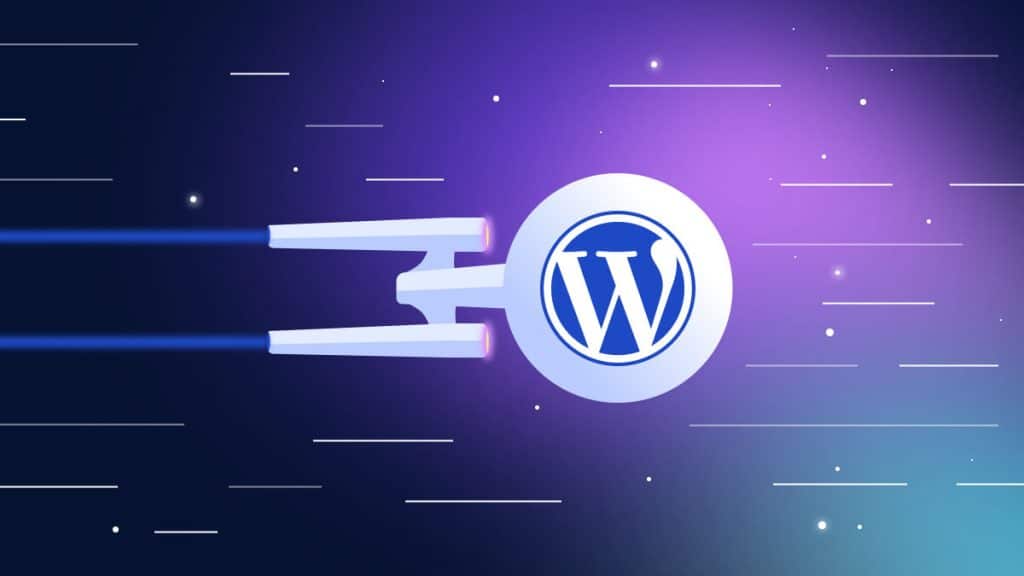Introduction
In the ever-evolving digital landscape of 2024, website speed remains a critical factor for success, especially for WordPress sites. As the most popular Content Management System (CMS), WordPress powers a significant portion of the web, making WordPress speed optimization services more vital than ever. This blog post delves into the essential techniques for maximizing WordPress website performance. By understanding and implementing these strategies, you can ensure your WordPress site is not only fast and efficient but also ranks higher in search engine results, enhancing user experience and boosting your online presence.
The importance of website speed cannot be overstated. In an age where users expect lightning-fast responses, a sluggish website can lead to increased bounce rates, poor user experience, and loss of revenue. WordPress, with its vast ecosystem of themes and plugins, offers great functionality but can also become bloated if not properly managed. This is where WordPress speed optimization services come into play, ensuring that your site is optimized for the highest performance.
Optimizing your WordPress site isn’t just about installing a few plugins or making superficial changes. It involves a deep understanding of how WordPress works, and how various elements like hosting, themes, plugins, and content can affect site speed. In the following sections, we’ll explore the key techniques and best practices for WordPress speed optimization, ensuring your website runs at its peak performance in 2024.
Understanding the Need for WordPress Speed Optimization Services
The Role of Speed in User Experience and SEO
Speed is a critical component of user experience. A fast-loading website ensures that visitors stay engaged, reducing bounce rates and increasing the likelihood of conversion. Moreover, search engines like Google prioritize site speed in their ranking algorithms. This means that optimizing your WordPress site for speed is not just about enhancing user experience, but also about improving your SEO. WordPress speed optimization services focus on these aspects, ensuring your site performs well on both fronts.
Core Web Vitals and WordPress
In recent years, Google’s Core Web Vitals have become a key metric in assessing website performance. These vitals measure the speed, responsiveness, and visual stability of a site. WordPress sites, with their diverse range of themes and plugins, need careful optimization to meet these standards. WordPress speed optimization services help in fine-tuning these aspects, ensuring that your site not only loads quickly but also offers a smooth and stable user experience.

Selecting the Right Hosting for WordPress Speed
The Impact of Hosting on Site Speed
The foundation of any fast WordPress site is its hosting service. Not all hosting services are created equal, and the choice can have a significant impact on your site’s speed. WordPress speed optimization services often start with an assessment of your hosting environment. Opting for a WordPress-optimized hosting service can dramatically improve your site’s loading times, thanks to servers that are configured specifically for WordPress performance.
Managed WordPress Hosting Solutions
For those looking to maximize their site’s potential, managed WordPress hosting is an excellent option. These services not only provide optimized server environments but also take care of many aspects of WordPress website management, such as updates, backups, and security. This leaves you free to focus on content and business growth, knowing that the technical aspects of your site’s speed are being handled by experts.
Leveraging Caching for Enhanced WordPress Performance
The Basics of Caching in WordPress
Caching is a critical component in WordPress speed optimization. It involves storing copies of your site’s content in a temporary storage location, allowing for quicker access. This means that when a user visits your site, they are served a cached version, drastically reducing load times. WordPress speed optimization services can implement various caching solutions, from browser caching to server-side caching, to ensure your site loads as quickly as possible.
Choosing the Right Caching Plugin
There are numerous caching plugins available for WordPress, each offering different features and levels of customization. Choosing the right one can significantly impact your site’s performance. WordPress speed optimization services can help you select and configure the best caching plugin for your specific needs, taking into account factors like your hosting environment and the complexity of your site.
Optimizing Images and Media for Faster Load Times
The Importance of Image Optimization
Images and media files often account for the bulk of a website’s size, making them a key focus in WordPress speed optimization. Large, unoptimized images can slow down your site considerably. By compressing images, using the right file formats, and implementing responsive images, you can significantly reduce the load time of your pages.
Tools and Techniques for Media Optimization
There are various tools and techniques available for optimizing media on WordPress sites. This includes image compression plugins, lazy loading, and using content delivery networks (CDNs) to serve media files. WordPress speed optimization services can help you implement these solutions effectively, ensuring that your media files are optimized without sacrificing quality.
Minifying CSS and JavaScript Files
Understanding Minification in WordPress
Minification is the process of removing unnecessary characters (like whitespace and comments) from CSS and JavaScript files. This reduces their size, resulting in faster load times. WordPress speed optimization services can perform this task efficiently, ensuring that your site’s performance is enhanced without impacting its functionality.
Best Practices for File Minification
While minification is beneficial, it’s important to do it correctly to avoid any functionality issues. WordPress speed optimization services follow best practices, such as testing the site after minification and ensuring that only non-essential characters are removed. This meticulous approach guarantees that your site remains fast and functional.

Implementing Advanced WordPress Speed Optimization Techniques
Leveraging Browser Caching
Browser caching is a technique where web browsers store copies of web pages, allowing them to load more quickly upon subsequent visits. WordPress speed optimization services can set this up correctly, ensuring that your site benefits from reduced load times for returning visitors.
Utilizing Content Delivery Networks (CDNs)
CDNs are networks of servers distributed globally, designed to deliver content efficiently to users based on their geographic location. By using a CDN, your WordPress site can serve content from the nearest server to the visitor, significantly reducing load times. WordPress speed optimization services can help integrate a CDN with your site, ensuring optimal performance.
Streamlining WordPress Themes and Plugins
The Impact of Themes and Plugins on Speed
Themes and plugins greatly enhance the functionality of WordPress sites, but they can also affect speed. WordPress speed optimization services include assessing and selecting themes and plugins that are well-coded and optimized for speed. This can involve replacing bulky themes or plugins with lighter, more efficient alternatives.
Regular Maintenance and Updates
Regular maintenance and updates are crucial for keeping your WordPress site fast and secure. WordPress speed optimization services often include routine checks and updates for themes and plugins, ensuring they are not only up-to-date but also optimized for speed.
Database Optimization for WordPress
Cleaning Up WordPress Databases
Over time, WordPress databases can become bloated with unnecessary data, slowing down your site. Database optimization involves cleaning up this data, including post revisions, drafts, and unused tables. WordPress speed optimization services can perform this optimization, ensuring your database runs efficiently.
Regular Database Maintenance
Regular database maintenance is essential for ongoing WordPress performance. This includes tasks like optimizing database tables and deleting old data. WordPress speed optimization services can set up regular maintenance schedules, keeping your database lean and your site fast.
Mobile Optimization for WordPress Sites
The Importance of Mobile Performance
With the increasing use of mobile devices to access the web, mobile performance has become a critical aspect of WordPress speed optimization. This involves ensuring that your site is responsive, loads quickly on mobile devices, and provides a good user experience on smaller screens.
Implementing Responsive Design and AMP
Responsive design and Accelerated Mobile Pages (AMP) are key technologies for improving mobile performance. WordPress speed optimization services can help implement these technologies, ensuring your site is not only fast but also user-friendly on mobile devices.
Regular Performance Audits and Monitoring
Conducting WordPress Site Audits
Regular performance audits are vital to understand how your site is performing and to identify areas for improvement. WordPress speed optimization services include conducting these audits, using tools to analyze site speed, and implementing changes based on the findings.
Ongoing Performance Monitoring
Ongoing monitoring is crucial to maintain optimal performance. This includes tracking site speed over time and making adjustments as needed. WordPress speed optimization services can provide this monitoring, ensuring your site consistently meets performance standards.

Conclusion: The Importance of WordPress Speed Optimization Services in 2024
As we move further into 2024, the significance of WordPress speed optimization services in enhancing site performance cannot be overstated. A fast-loading WordPress site is essential for providing a great user experience, improving SEO, and staying competitive in the digital space. By employing the techniques and best practices outlined in this post, including choosing the right hosting, leveraging caching, optimizing images and media, and conducting regular audits, you can ensure that your WordPress site is not just keeping up with the times, but setting the pace.
Remember, WordPress speed optimization is not a one-time task, but an ongoing process. As WordPress continues to evolve, so do the strategies for optimizing its speed. Staying informed and proactive in implementing these techniques will be key to maintaining a fast, efficient, and successful WordPress site in 2024 and beyond.
What is WordPress Speed Optimization Service?
WordPress Speed Optimization Service is a specialized service aimed at enhancing the performance and loading speed of WordPress websites. It involves various techniques like caching, image optimization, minifying CSS and JavaScript files, and implementing content delivery networks (CDNs). This service is crucial for improving user experience, reducing bounce rates, and boosting SEO rankings.
How does optimizing speed impact my WordPress website?
Optimizing the speed of your WordPress website has multiple benefits. It significantly improves the user experience by ensuring your site loads quickly and runs smoothly. This is especially important for retaining visitors and reducing bounce rates. Additionally, faster loading times are a key factor in SEO, as search engines like Google favor quick-loading sites. This means better visibility and higher rankings in search results.


